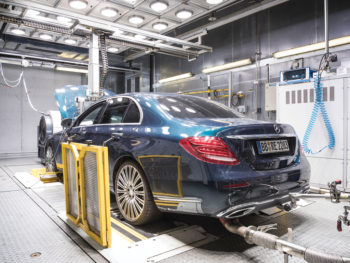WLTP review will see current VED and company car tax structures retained
HM Treasury has opened its planned review into whether revisions to Company Car Tax and Vehicle Excise Duty are required as a result of the shift to WLTP – as it outlines that the basic VED and company car tax structures currently used will be retained.
The review was announced in October’s Budget; although fleets had been expecting the Government to provide clarity on future CCT and VED rates and how the switch to the Worldwide harmonised Light vehicles Test Procedure (WLTP) from April 2020 would be handled, HM Treasury merely said it would conduct a review with results due in the spring.
Full details of the review have now emerged, with the responses due by 17 February 2019.
It follows the introduction of the WLTP fuel and emissions testing cycle for all new car registrations from 1 September 2018, with the aim of better aligning reported CO2 emissions measured in the laboratory with those achieved during real-world driving conditions. This will help reduce the current gap of around 40% that exists between results achieved in the laboratory for the former NEDC test and actual emissions.
Although it’s now mandatory for all new cars, figures are currently being converted back to NEDC equivalents – or ‘NEDC-Correlated’ figures – using a tool introduced by the European Union and known as CO2MPAS. As announced in the 2017 Budget, VED and Company Car Tax (CCT) will continue to be based on these NEDC Correlated fuel economy and CO2 figures until April 2020, when they will shift to using the ‘full fat’ WLTP figures – and it’s this change that could really hit fleets.
Although the shift from the old ‘true’ NEDC figures to the NEDC Correlated ones has already resulted in VED and CCT increases for fleets – figures from Jato this summer showed an average 9.6g/km uplift – it’s the shift from NEDC Correlated to WLTP that’s expected to really bite. Initial evidence provided by manufacturers suggests that more than 50% of cars will see an increase from NEDC to WLTP of between 10% and 20%, bringing major cost increases for drivers through BiK and for fleets through VED and National Insurance contributions (NICs).
This is borne out by figures in the document, which says that at Budget 2018 the Office for Budget Responsibility assumed an increase in Exchequer revenue by adjusting the VED and company car tax forecasts from April 2020. VED receipts are forecast to increase by around £200m a year on average from 2020-21 onwards while company car tax receipts – through income tax and NICs – are forecast to increase by £100m in 2020-21, rising to £400m in 2023-24.
In its review document, the Government says its research has focused on the differences between equivalent NEDC figures and WLTP; the initial switch to NEDC Correlated is not being looked at. It’s also only addressing the impact of WLTP on VED and company car tax for cars; other policies linked to CO2 emissions – such as capital allowances – are not being considered, nor is the impact of WLTP on the van sector, which will be considered separately.
And it also says it’s striving for a mid-way ground, “aiming to strike the balance between protecting consumers from increased transport costs and ensuring we meet our climate change and air quality commitments by providing clear incentives for zero and ultra low emission vehicles (ULEVs)”.
The Government has also outlined that it believes that the fundamental structure of VED and company car tax is appropriate, including the diesel supplement and timeframe for introduction of future Company Car Tax rates. This is reflected by the tight timings for changes; HM Treasury has outlined that if revisions to the vehicle tax system are required, these would be introduced into Finance Bill 2019-20, with draft legislation being published for technical consultation ahead of that. This puts a premium on keeping any changes within the current framework.
The review welcomes evidence from the automotive sector on the impact of WLTP on their fleet as well as comments from motoring organisations, environmental groups and any other individuals or organisations who would like to contribute.
For more details of the review and to submit responses, click here.













